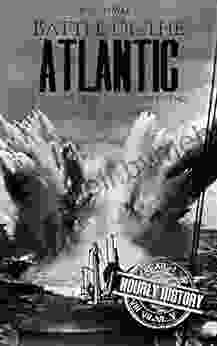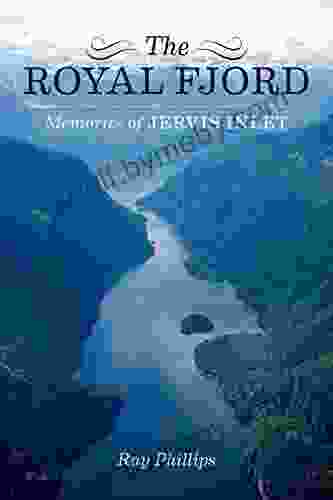Battle of the Atlantic: The Longest and Bloodiest Campaign of World War II

The Battle of the Atlantic was the longest and bloodiest campaign of World War II, lasting from September 1939 to May 1945. It was a naval campaign fought between the Allies and the Axis powers over control of the Atlantic Ocean. The Allies, led by the United Kingdom, the United States, and Canada, sought to protect their shipping lanes from German U-boats and surface raiders, while the Axis powers, led by Germany, sought to disrupt Allied shipping and starve Britain into submission.
4.3 out of 5
| Language | : | English |
| File size | : | 1135 KB |
| Text-to-Speech | : | Enabled |
| Enhanced typesetting | : | Enabled |
| Word Wise | : | Enabled |
| Print length | : | 28 pages |
| Lending | : | Enabled |
| Screen Reader | : | Supported |
The Battle of the Atlantic was a crucial campaign of World War II, and its outcome had a major impact on the course of the war. If the Allies had lost the Battle of the Atlantic, the British Isles would have been cut off from their supplies and the war in Europe would have been lost. Conversely, if the Axis powers had won the Battle of the Atlantic, they would have been able to control the Atlantic Ocean and use it to launch a full-scale invasion of the United Kingdom.
The Battle of the Atlantic began on September 3, 1939, when the German U-boat U-30 sank the British passenger liner SS Athenia. The Athenia was the first ship to be sunk in the Battle of the Atlantic, and its sinking caused a major panic in Britain. In the months that followed, German U-boats and surface raiders sank dozens more Allied ships, causing widespread disruption to Allied shipping.
In response to the German attacks, the Allies began to develop new anti-submarine warfare (ASW) techniques. These techniques included the use of sonar, radar, and depth charges. The Allies also developed new tactics for escorting convoys of ships, and they began to build more ASW ships.
As the war progressed, the Allies gradually gained the upper hand in the Battle of the Atlantic. The Allies developed new technologies and tactics to combat the German U-boats, and they began to build more ASW ships. The Allies also received help from the United States, which entered the war in December 1941.
By the end of the war, the Allies had won the Battle of the Atlantic. The Allies had sunk over 700 German U-boats and destroyed hundreds of Axis surface raiders. The Allies had also developed new ASW techniques and tactics that would be used in future naval wars.
The Battle of the Atlantic was a long and bloody campaign, but it was ultimately a victory for the Allies. The Allies' victory in the Battle of the Atlantic helped to ensure the survival of Britain and the eventual defeat of the Axis powers.
The Impact of the Battle of the Atlantic on the Course of World War II
The Battle of the Atlantic had a major impact on the course of World War II. If the Allies had lost the Battle of the Atlantic, the British Isles would have been cut off from their supplies and the war in Europe would have been lost. Conversely, if the Axis powers had won the Battle of the Atlantic, they would have been able to control the Atlantic Ocean and use it to launch a full-scale invasion of the United Kingdom.
The Allies' victory in the Battle of the Atlantic was a major turning point in the war. It gave the Allies the confidence to launch their own offensives against the Axis powers, and it helped to ensure the eventual defeat of the Axis powers.
The Battle of the Atlantic is often overlooked when discussing World War II, but it was one of the most important battles of the war. The Allies' victory in the Battle of the Atlantic was a major factor in the Allied victory in World War II.
4.3 out of 5
| Language | : | English |
| File size | : | 1135 KB |
| Text-to-Speech | : | Enabled |
| Enhanced typesetting | : | Enabled |
| Word Wise | : | Enabled |
| Print length | : | 28 pages |
| Lending | : | Enabled |
| Screen Reader | : | Supported |
Do you want to contribute by writing guest posts on this blog?
Please contact us and send us a resume of previous articles that you have written.
 Book
Book Novel
Novel Page
Page Chapter
Chapter Text
Text Story
Story Genre
Genre Reader
Reader Library
Library Paperback
Paperback E-book
E-book Magazine
Magazine Newspaper
Newspaper Paragraph
Paragraph Sentence
Sentence Bookmark
Bookmark Shelf
Shelf Glossary
Glossary Bibliography
Bibliography Foreword
Foreword Preface
Preface Synopsis
Synopsis Annotation
Annotation Footnote
Footnote Manuscript
Manuscript Scroll
Scroll Codex
Codex Tome
Tome Bestseller
Bestseller Classics
Classics Library card
Library card Narrative
Narrative Biography
Biography Autobiography
Autobiography Memoir
Memoir Reference
Reference Encyclopedia
Encyclopedia Helena Mayer
Helena Mayer Peggy J Martin
Peggy J Martin Harvey J Kaye
Harvey J Kaye John Samuel Barnett
John Samuel Barnett Mary Pagones
Mary Pagones Philippe Fontaine
Philippe Fontaine Herbert Wolverson
Herbert Wolverson Inge Auerbacher
Inge Auerbacher Patricia Sands
Patricia Sands Norman Bryson
Norman Bryson Nancy Jooyoun Kim
Nancy Jooyoun Kim Tanis C Thorne
Tanis C Thorne Holly Tucker
Holly Tucker Rex Ogle
Rex Ogle Helen K Emms
Helen K Emms Igor Ryzov
Igor Ryzov Martin Kemp
Martin Kemp Hope Edelman
Hope Edelman Helen Fremont
Helen Fremont Henry Chesbrough
Henry Chesbrough
Light bulbAdvertise smarter! Our strategic ad space ensures maximum exposure. Reserve your spot today!

 Stephen FosterUnleash Your Inner Artist: Dive into the World of Modern Fashion Illustration...
Stephen FosterUnleash Your Inner Artist: Dive into the World of Modern Fashion Illustration...
 Jay Simmons21 Unforgettable London Walks by the City's Most Captivating Rivers, Canals,...
Jay Simmons21 Unforgettable London Walks by the City's Most Captivating Rivers, Canals,...
 Vincent MitchellPart Phantom Blood Vol Jojo Bizarre Adventure: The Epic Origin of a Legendary...
Vincent MitchellPart Phantom Blood Vol Jojo Bizarre Adventure: The Epic Origin of a Legendary... Holden BellFollow ·17.9k
Holden BellFollow ·17.9k Blake KennedyFollow ·5.4k
Blake KennedyFollow ·5.4k Arthur Conan DoyleFollow ·7.2k
Arthur Conan DoyleFollow ·7.2k David MitchellFollow ·15.6k
David MitchellFollow ·15.6k Reed MitchellFollow ·15.1k
Reed MitchellFollow ·15.1k Howard PowellFollow ·13.6k
Howard PowellFollow ·13.6k Chandler WardFollow ·11.7k
Chandler WardFollow ·11.7k Joshua ReedFollow ·11k
Joshua ReedFollow ·11k

 Bo Cox
Bo CoxUncover the Enchanting Pearl of the Arabian Gulf: Insight...
Escape to the opulent...

 Michael Crichton
Michael CrichtonInsight Guides Pocket Baku Travel Guide Ebook: Your...
An Enchanting Journey...

 Eugene Scott
Eugene ScottLearn to Paint Scenic Scenes: Unveil the Secrets of...
Step into the...

 Benji Powell
Benji PowellEmbark on a Culinary Adventure with "The Ultimate Sichuan...
Sichuan cuisine,...

 Finn Cox
Finn CoxDiscover the Enchanting World of Art Nouveau: A...
Immerse yourself in the captivating beauty...

 Corey Green
Corey GreenUncover the Vibrant World of Guatemalan Chicken Buses: An...
Step into a world of vibrant colors,...
4.3 out of 5
| Language | : | English |
| File size | : | 1135 KB |
| Text-to-Speech | : | Enabled |
| Enhanced typesetting | : | Enabled |
| Word Wise | : | Enabled |
| Print length | : | 28 pages |
| Lending | : | Enabled |
| Screen Reader | : | Supported |






